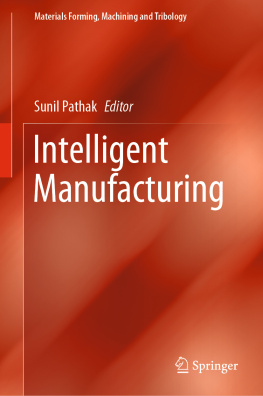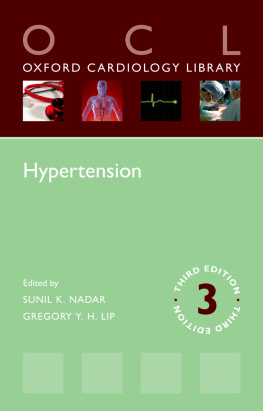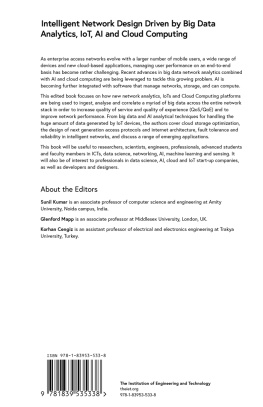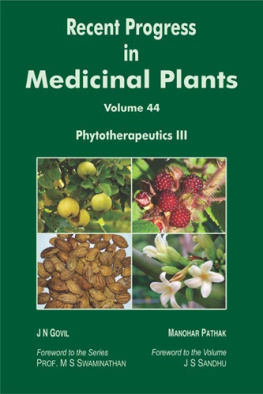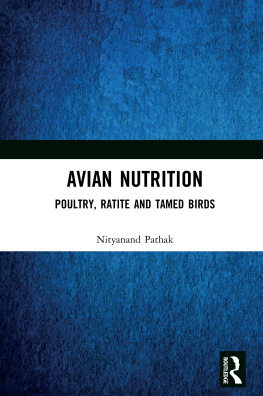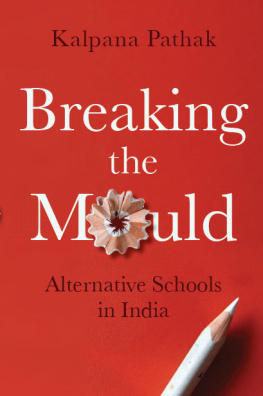Sunil Pathak - Intelligent Manufacturing
Here you can read online Sunil Pathak - Intelligent Manufacturing full text of the book (entire story) in english for free. Download pdf and epub, get meaning, cover and reviews about this ebook. year: 2020, publisher: Springer International Publishing, genre: Home and family. Description of the work, (preface) as well as reviews are available. Best literature library LitArk.com created for fans of good reading and offers a wide selection of genres:
Romance novel
Science fiction
Adventure
Detective
Science
History
Home and family
Prose
Art
Politics
Computer
Non-fiction
Religion
Business
Children
Humor
Choose a favorite category and find really read worthwhile books. Enjoy immersion in the world of imagination, feel the emotions of the characters or learn something new for yourself, make an fascinating discovery.
- Book:Intelligent Manufacturing
- Author:
- Publisher:Springer International Publishing
- Genre:
- Year:2020
- Rating:4 / 5
- Favourites:Add to favourites
- Your mark:
- 80
- 1
- 2
- 3
- 4
- 5
Intelligent Manufacturing: summary, description and annotation
We offer to read an annotation, description, summary or preface (depends on what the author of the book "Intelligent Manufacturing" wrote himself). If you haven't found the necessary information about the book — write in the comments, we will try to find it.
Intelligent Manufacturing — read online for free the complete book (whole text) full work
Below is the text of the book, divided by pages. System saving the place of the last page read, allows you to conveniently read the book "Intelligent Manufacturing" online for free, without having to search again every time where you left off. Put a bookmark, and you can go to the page where you finished reading at any time.
Font size:
Interval:
Bookmark:
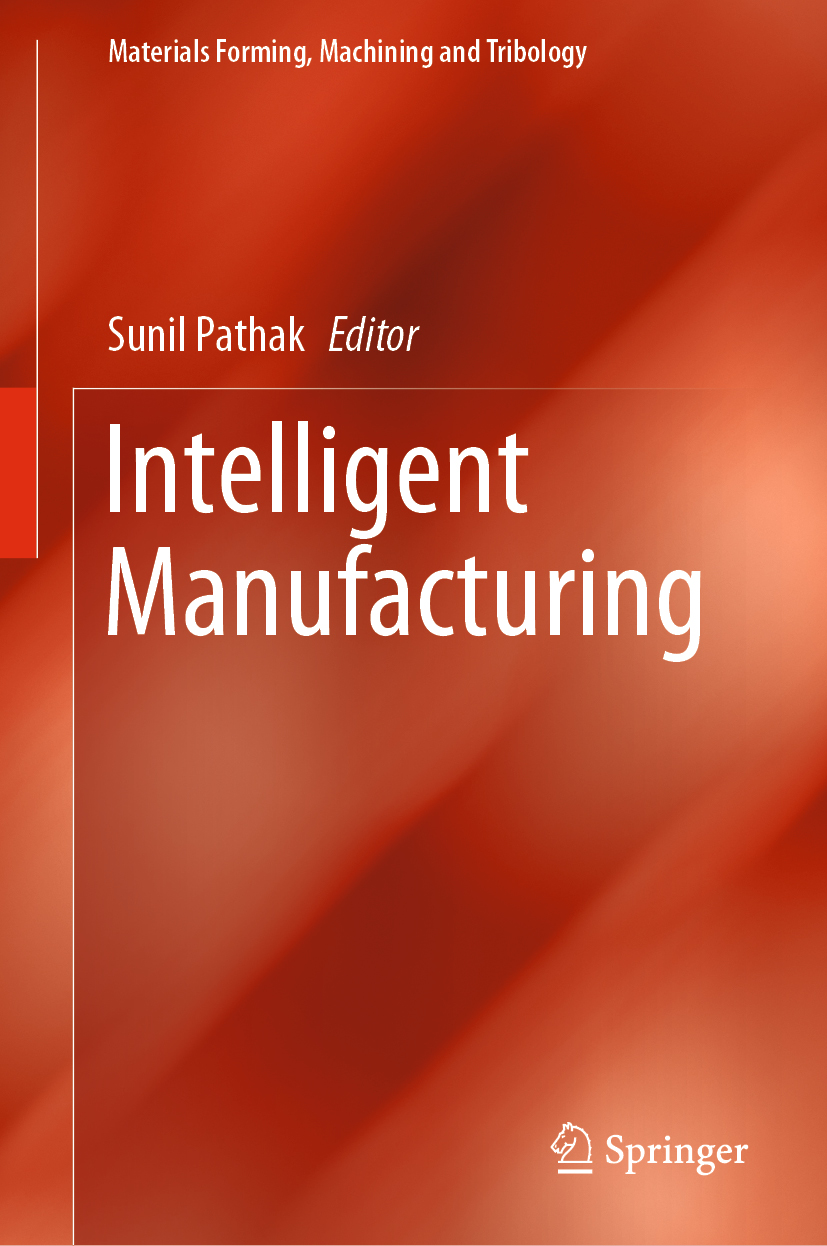
This series fosters information exchange and discussion on all aspects of materials forming, machining and tribology. This series focuses on materials forming and machining processes, namely, metal casting, rolling, forging, extrusion, drawing, sheet metal forming, microforming, hydroforming, thermoforming, incremental forming, joining, powder metallurgy and ceramics processing, shaping processes for plastics/composites, traditional machining (turning, drilling, miling, broaching, etc.), non-traditional machining (EDM, ECM, USM, LAM, etc.), grinding and others abrasive processes, hard part machining, high speed machining, high efficiency machining, micro and nanomachining, among others. The formability and machinability of all materials will be considered, including metals, polymers, ceramics, composites, biomaterials, nanomaterials, special materials, etc. The series covers the full range of tribological aspects such as surface integrity, friction and wear, lubrication and multiscale tribology including biomedical systems and manufacturing processes. It also covers modelling and optimization techniques applied in materials forming, machining and tribology. Contributions to this book series are welcome on all subjects of green materials forming, machining and tribology. To submit a proposal or request further information, please contact Dr. Mayra Castro, Publishing Editor Applied Sciences, via mayra.castro@springer.com or Professor J. Paulo Davim, Book Series Editor, via pdavim@ua.pt
More information about this series at http://www.springer.com/series/11181

This Springer imprint is published by the registered company Springer Nature Switzerland AG
The registered company address is: Gewerbestrasse 11, 6330 Cham, Switzerland
The 4th industrial revolution urges all sectors, including manufacturing, to develop and adopt intelligent methods and techniques in order to stay competitive in the global economy. The manufacturing sector is one of the most significant contributors in the world economy and always busy promoting research, development, and innovations to meet the accelerated demand for productivity, quality, and sustainability. Intelligent manufacturing processes and techniques have always been helpful to attain that. Therefore, it is important for the engineers, managers, researchers, and professors working in the manufacturing field to understand the development, implementation and effectiveness of various intelligent manufacturing methods and techniques.
This book facilitates them by providing fundamental understanding, basic knowledge, and advanced research insights on intelligent manufacturing methods and techniques for a wide range of conventional and advanced type manufacturing processes.
This book consists of eight chapters on intelligent manufacturing. Chapter highlighting the hybrid approach for prediction and modelling of abrasive water jet machining parameter on Al-NiTi composites, where the combinations of advanced optimization techniques such as SVM-entropy model, GRA-AVM-entropy modelling.
I sincerely acknowledge Springer for this opportunity and their professional support. I am also thankful to all chapter contributors for their availability and valuable contributions.
Artificial neural network
APGas pressure
BBed speed
CCapacitance
CPConcentration of powder
DFDuty factor
DPDielectric pressure
DTDischarge time
EDMElectro-discharge machining
EWElectrode wear
EWRElectrode wear rate
FFeed rate
GGain size of powder
GAGenetic algorithm
GCGap current
GRAGrey relational analysis
IDischarge current
IPPeak current
KERFCutting width
MMachining depth
MDMachining diameter
MIDMicroscopic depth
MRRMaterial removal rate
OCRadial overcut
PPolarity
PWPulse width
RResistance
RCRadial clearance of shield at the bottom
REWRRelative electrode wear rate
RLTRecast layer thickness
RSResidual stress
RSMResponse surface methodology
SElectrode speed
SCDSurface crack density
SFFlushing rate
SFSparking frequency
SGSpark gap
SHSurface hardness
SHFShape factor
SRSurface roughness
SUFSurface finish
SVServo voltage
TTool electrode lift time
TATool area
TMTotal machining time
ToffPulse off time
TonPulse on time
TSTool shape
TTTaguchi technique
TWRTool wear rate
VOpen/gap voltage
WWire speed
WLTWhite layer thickness
WTWire tension
WWRWire wear ratio
Font size:
Interval:
Bookmark:
Similar books «Intelligent Manufacturing»
Look at similar books to Intelligent Manufacturing. We have selected literature similar in name and meaning in the hope of providing readers with more options to find new, interesting, not yet read works.
Discussion, reviews of the book Intelligent Manufacturing and just readers' own opinions. Leave your comments, write what you think about the work, its meaning or the main characters. Specify what exactly you liked and what you didn't like, and why you think so.

